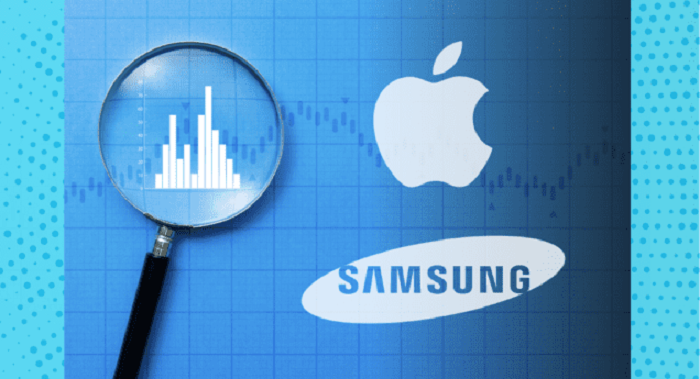
Samsung and Apple have been making disruptive changes to the ad tech ecosystem.
Apple, more than Samsung, is becoming more privacy-centric with every update. Yet it spends nearly all of its digital advertising on targeted, programmatic ads.
As these two mobile device companies tighten their own advertising and privacy policies, how are they using targeted ads to reach potential customers?
Apple adds more privacy features (again.) Samsung removes ads.
A month ago, Apple released iOS 15, featuring new privacy updates. In addition to the tracking opt-out option released with iOS 14.5, users have new ways to hide from snooping marketers (at least for now.)
iPhone users can block advertisers from seeing their IP address when using Safari, known as “IP masking,” and they can hide their email addresses from marketers trying to identify who opened their email.
With “private relay” iCloud users can benefit from encrypted web browsing.
“The big thing [in iOS 15] is around Safari,” explained Jess Simpson, senior VP, Publicis Media to AdAge. “Previously, it was IDFA opt-in and now it’s really focused on IP addresses, which a lot of folks are using as cookie replacements.”
Ad tech leaders believe that Apple’s strategy is to bring back their own ad network.
Apple previously had their own network that served display ads, but struggled to keep up with the competition of Facebook and Google. By largely blocking data from competitors and keeping it connected to individual devices, Apple is likely building a privacy-centered platform for targeted advertising.
With the release of iOS 14.5, Facebook’s stock dipped 4%, with loyal investors selling off and ad partners cutting their investments. Time will only tell how these additional privacy features and competition will impact their ad tech model.
When it comes to Android devices, developers and third-parties can still largely track individuals even if they opt-out of tracking. But Samsung is changing its ad policies in a different way. Samsung will no longer serve ads across its stock apps.
According to Samsung’s head of mobile Roh Tae-moon, Samsung was “seeking new growth opportunities in the fields of content and advertising services such as games and media to strengthen the integrated Galaxy ecosystem experience.”
As these two companies change up how advertisers can serve programmatic ads on their devices, we wanted to see how it was on the flip side. How are they themselves using targeted advertising, even as they make it more difficult for other companies?
MediaRadar Insights
Apple
This year so far, 30% of Apple’s iPhone advertising budget was dedicated to programmatic.
This is likely due to the fact that 97% of their digital ad spend ($4.8 million total so far) was invested in YouTube (which is inherently programmatic.)
Similarly, nearly 100% of their digital advertising was programmatic last year.
Samsung
Compared to Apple, Samsung invests a much smaller portion of their cell phone digital budget in programmatic advertising.
They spent 18% of their digital advertising budget in programmatic advertising. Even though the percentage of their digital ad spend is smaller than Apple, it is still significantly larger in dollar amount—$9.7 million.
Neither Samsung nor Apple is advertising on Facebook right now, but both have been placing ads on bigger eCommerce sites like Costco.
Where Apple is buying programmatically mainly through YouTube and some eCommerce sites, Samsung appears on: Amazon, Lifewire, Overstock, The Guardian, MSN, The New York Times and many others.
Samsung is using nearly twice the amount of DSPs as Apple. Samsung has used 19 so far this year, while Apple has used 10.
As people continue to use their mobile devices for online shopping post-COVID and post-cookie or individual identifier, it goes without saying that alternative data solutions will be essential for all players in the ad tech ecosystem.
eCommerce sites like Costco, Amazon and Overstock might become even more important for performance marketers needing to connect advertisements to direct sales. For now, that’s where we see companies like Samsung and Apple, who do have troves of data, shifting some of their programmatic spend.
To learn more about the data behind this article and what MediaRadar has to offer, visit https://mediaradar.com/.







Sign up to receive our stories in your inbox.
Data is changing the speed of business. Investors, Corporations, and Governments are buying new, differentiated data to gain visibility make better decisions. Don't fall behind. Let us help.













Sign up to receive our stories in your inbox.
Data is changing the speed of business. Investors, Corporations, and Governments are buying new, differentiated data to gain visibility make better decisions. Don't fall behind. Let us help.





